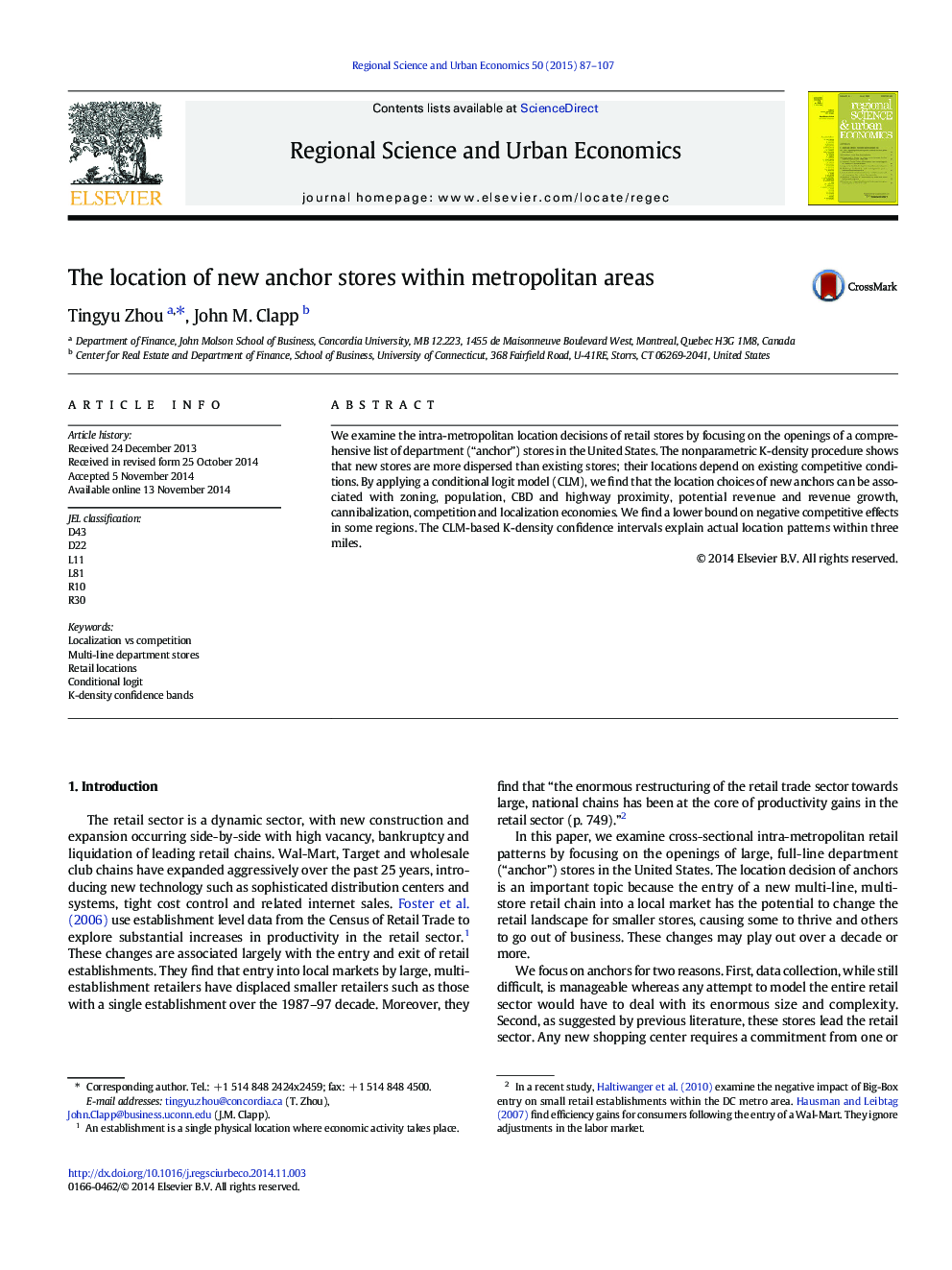| Article ID | Journal | Published Year | Pages | File Type |
|---|---|---|---|---|
| 983700 | Regional Science and Urban Economics | 2015 | 21 Pages |
•Unique dataset over time for a comprehensive list of multiline department stores•Empirical analyses of spatial patterns of store openings•Effective in explaining actual location patterns within three miles•Extends the concept of localization economies to include retail clusters•Separates negative competitive effects from localization economies
We examine the intra-metropolitan location decisions of retail stores by focusing on the openings of a comprehensive list of department (“anchor”) stores in the United States. The nonparametric K-density procedure shows that new stores are more dispersed than existing stores; their locations depend on existing competitive conditions. By applying a conditional logit model (CLM), we find that the location choices of new anchors can be associated with zoning, population, CBD and highway proximity, potential revenue and revenue growth, cannibalization, competition and localization economies. We find a lower bound on negative competitive effects in some regions. The CLM-based K-density confidence intervals explain actual location patterns within three miles.
